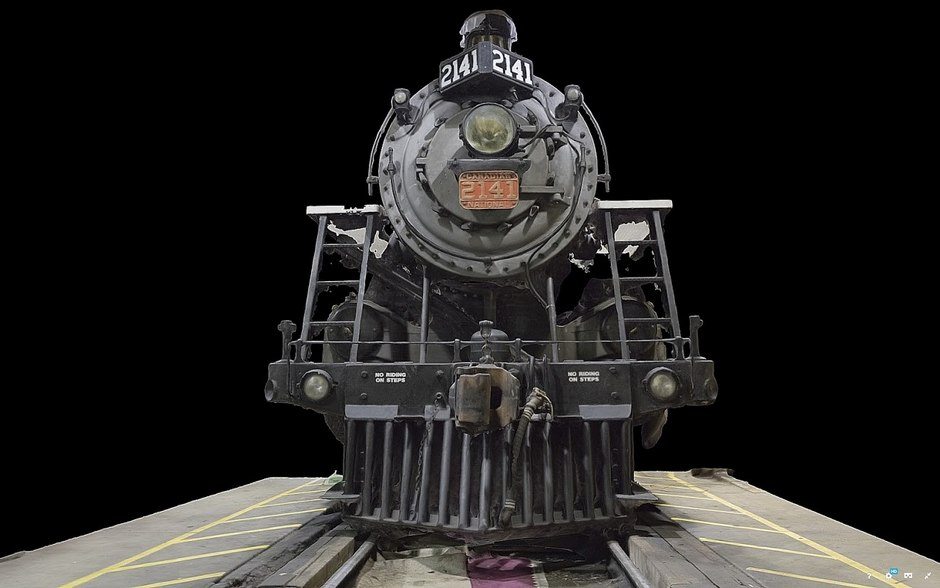Digital scanning has been a particularly useful tool for many historic sites over years, as excavating them can often cause more damage than good, leaving a destroyed piece of history that no one can enjoy. The method of preserving historic artefacts whilst also ‘saving a copy’ digitally is also being applied to objects that people can already access, such as the work of ‘Scan the World’ , though in the case of scanning far larger objects and sites, this isn’t just for recording purposes. Hollywood filmmakers can also benefit.
The Arc/k Project, is a nonprofit organization who’s aim is to create 3D records of major cultural sites for them to be preserved digitally, whilst also being accessible for the film industry to feature in their work.
They’re producing 3D models of landmarks and valuable historic objects by using the latest in 3D scanning technology, and its more important than ever that they make the most of these scanning opportunities. Terrorist threats as well as environmental problems and global warming are having a massive impact on precious historical sites. They’ve already managed to model Palmyra’s Theater and Temple of Baalshamin thanks to the the help of artists and technicians, these sites were unfortunately heavily damaged by ISIS last year. One of their more recent projects includes modelling Þingvellir, a site in Iceland, which is the site of the first parliament in Europe. It’s currently under threat from potential earthquakes and erosion, so the team are working against the clock.
“Our mission is to save endangered cultural assets,” says the organization’s founder, Brian Pope. “We want to preserve the ephemera of our world — glaciers that are retreating, cities that are changing, statues that are decaying — for future generations in a way never before possible.”
How does this help Hollywood?
As many know, film sets are no stranger to the unforgiving feet of the filming team and actors, so using an accurate model of a historic site as CGI eliminates any possible damage caused by people interacting with it. Though this means the animation team and other 3D technicians will have more on their plate, it does mean that the filming team and actors don’t have to be sent out to these sites to film, instead, they can just make use of a studio, and lots (and I mean lots) of green screens. Seems like a tonne of messing about, but at the cost of keeping a historial site untouched, it seems pretty reasonable.
“We want to satisfy Hollywood’s need for exotic locations, while providing a new revenue stream, through licensing fees, for organizations that manage these sites,” says Pope. “At the same time, we are accomplishing our goal to preserve culturally-significant assets. It’s a triple win!”
He has also mentioned that the project is creating a model of a 19th century steam locomotive for a Canadian heritage organisation, as it is often a popular prop for film productions. Sadly, the real thing costs a lot run and maintain, making it harder to use the train as a functioning prop. “The 3D model will allow the group to make its asset available to many more productions and increase revenue in a way that’s simpler and less invasive,” says Pope.
Pope is not only the founder of The Arc/k Project either, he’s also the founder of Cognition, a facility for visual effects and post production which helps independent producers and film studios. This puts the work of The Arc/k Project straight into the industry, making accessibility far easier for both sides, whilst also making use of the resources both organizations have to offer.

Who else could this help?
The Arc/k Project hopes to produce an archive of thousands of models they produce, not only for the film industry, but also for art historians, scientists, researchers and even the general public. Having strong ties to the film industry, however, helps keep the project alive, as similar projects tend to struggle with funding. “Funding is a big issue in the academic world,” Pope mentions.“Many schools have to hustle for funds to support classes in photogrammetry. Trying to operate and manage a large-scale operation in a faraway and perhaps troubled spot is a real challenge for them. We have technical resources that they lack and a business model to make this very important work economically feasible.”
The team at The Arc/k Project also hope they can make the costs even lower by using crowd-sourcing, asking for help from universities, cultural institutions as well as the public to share information which can be used as part of their work. Pope has made it clear that anyone can take part in helping to create the database, soon to be full of cultural and historical information. “Most people today have a smartphone in their pocket that can be used to record culturally significant objects,” he says. “Anyone who gets out into the world can be involved in archiving. They can contribute to our collective memory of who we are and what we are becoming.” This puts the power to help record our precious landmarks in our hands, clearly demonstrating the impact we could all have on the preservation of history.



